The Michalinos, Michalos and Apodiakos Families
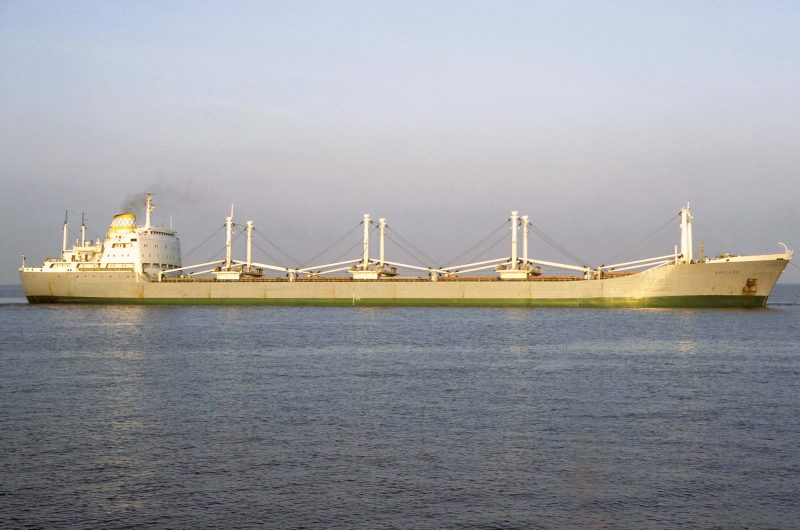
Greek owned ships currently make up the largest merchant fleet in the world, with some 19.63% of the world’s sea carrying capacity represent by 4,585 ships of 341.2 million deadweight tonnes, although not all of them sail under the Greek flag. This top position is almost entirely due to the traditional Greek concept of tramping, either dry bulk or oil, and there has been a marked contrast in recent years in both the size of the fleet and the number of families involved in tramping. The Michalinos family owned sailing ships and steam tramps throughout the 1870s in the village of Vrontados on the island of Chios, on which lived half of all Greek shipowners, and their fleets represented 26.1% of the total gross registered tonnage of the Greek fleet in 1975. The number of Chiot shipowners had also increased markedly from 1958 with 41 shipowners representing 3.05 million grt to 75 shipowners in 1975 representing 12.91 million grt.
Chios Town has a long history of wars with Ottoman and Turkish forces, resulting in much bloodshed, and reminders of this turbulent history can be found today in the Turkish ruins, baths and a Genoese castle in the town, the capital of Chios Island, and separated by a narrow strait together with the smaller Oinoussai Island from Turkey. The related Greek shipowning families of Michalos and Apodiakos, both from Chios, also form part of this Greek tramping saga lasting almost 150 years and which continues in business in worldwide tramping today.
The Michalinos and Michalos Families
Alexandros Michalinos was a very wealthy shipowner who began the construction of the neo-classical style Maximus Megaron (Maximos Mansion), which today is the official seat of the Prime Minister of Greece. It is located in Athens next to the Presidential Mansion and National Garden of Athens in Herodus Atticus Street. The mansion has a raised portico supported by six neo-classical columns at the top of a long flight of stone steps. The building was completed in 1921 after the death of Alexandros Michalinos, with his widow Irene Manoussis in 1916 selling the mansion to the equally wealthy shipowner Leonidas Embiricos, only to repurchase it on its completion in 1921.
The mansion was occupied by wealthy banker and politician Dimitrios Maximos, who had married Irene Manoussis, from completion until the occupation of Athens by Nazi Germany in 1941, being used as the residence of the German Admiral responsible for control of the Aegean Sea until 1944.
The mansion then became the official residence of the American Ambassador in Athens until sold in 1952 to the Greek State. It was then used as the guesthouse for important American, Jugoslavian and British Presidents, Prime Ministers and politicians, before Prime Minister Andreas Papandreou in 1982 moved in, as the Prime Minister’s office was previously located inside the Parliament Building.
The wealth of the Michalinos family began to be generated by the first two Michalinos family tramps, in Aghios Vlassios of 1,932 grt, built in 1879 by Joseph Laing at Sunderland, with dimensions of length 268.0 feet, moulded beam of 34.0 feet, and depth of 20.6 feet, and was powered by a compound two cylinder steam engine by George Clark of Sunderland, and the quarterdecker Despina G. Michalinos of 1,763 grt, completed in 1889 by the Robert Irvine yard at Hartlepool, with a quarterdeck of length seventy feet on an overall length of 260.6 feet, moulded beam of 36.6 feet and depth of 16.5 feet. A more powerful triple expansion steam engine by Blair of Stockton in the latter tramp enabled Alexandros Michalinos of Syros to trade with four sailing ships and steamers in 1889 throughout the Aegean, Eastern Mediterranean and Black Sea.
Alexandros Michalinos soon built up a sizeable tramping fleet, with the new quarterdeck tramp Georgios Michalinos following in 1893 of 3,060 grt from the Sir Raylton Dixon yard at Middlesbrough.
She had an overall length of 323.0 feet and moulded beam of 42.1 feet with the quarterdeck being of length 82.0 feet. She had a powerful triple expansion steam engine by John Dickinson of Sunderland, and a similar engine was fitted in the new quarterdeck tramp Vaglianos of 2,716 grt, managed for the Vaglianos Brothers, who later sold her to the Michalinos family and she was renamed Chios.
Alexandros Michalinos then purchased the similar tramp Brantwood of 2,664 grt from Charlton and Thompson of Sunderland and completed in 1894 by the Joseph L. Thompson yard on the Wear. He renamed this tramp after himself, and thus had a fleet of four tramps in 1900, but sold her in 1912 to Russian owners, being renamed Petr Karpov and she was wrecked near Gibraltar on 4th December 1920.
He took delivery of three new tramps of 5,000 dwt in 1902 in Aeolus and Bacchus from the Robert Duncan yard at Port Glasgow, and Marie Z. Michalinos from the Gray yard at West Hartlepool.
This latter tramp had an overall length of 332.0 feet, moulded beam of 48.0 feet, and depth of 21.9 feet with a bridge deck of length 170 feet and a powerful triple expansion steam engine from the associated Central Marine Engine Works.
The renowned Hartlepool tramp builder then won two more Michalinos orders, completed as Despina G. Michalions in 1907 and Zinovia in 1910.
The London agents of Michalinos and Company were housed at this time at Gresham House in Old Bond Street.
The effect of the war between Greece and Turkey during 1912 and 1913 was to bottle up Michalinos tramps in Balkan ports, but with an end to the fighting the tramp Zampa was purchased from Herskind and Woods to join the Michalinos Maritime and Commercial Company Ltd. of Piraeus of four tramps on the outbreak of World War I.
Marie Z. Michalinos was the only tramp left afloat at the end of the war, and the losses were eventually replaced with second hand tramp tonnage.
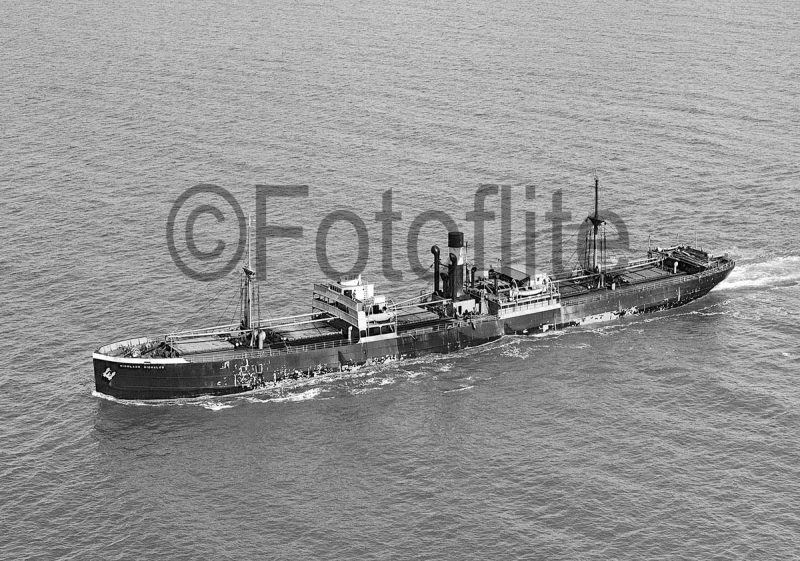
In 1924, the Michalinos fleet was back to three tramps in Marie Z. Michalinos, and Zinovia of 2,947 grt built in 1906 by Shorts of Sunderland as Andriana on dimensions of length 336.6 feet, moulded beam of 47.1 feet, and depth of 20.5 feet with a bridge deck of length 214 feet. A triple expansion steam engine by George Clark of Sunderland gave a service speed of eight knots, and the third tramp was Anthippi N. Michalos, built by Bartrams in 1905 as Novorossia.
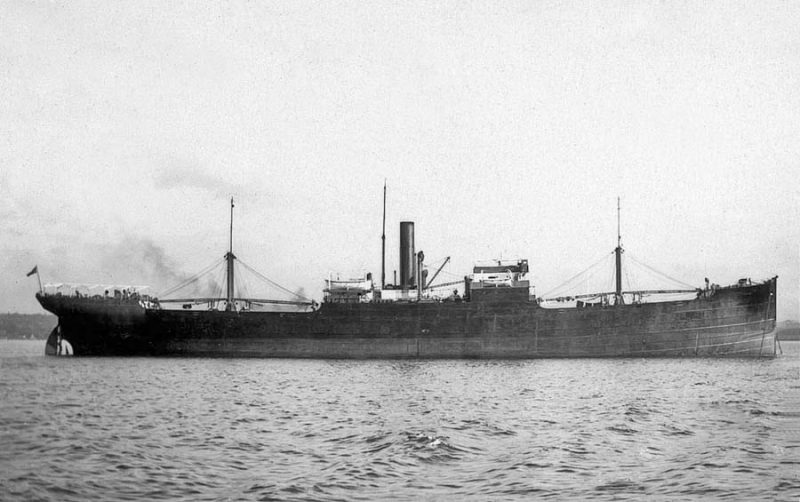
She sank on 22nd December 1940 after a collision with the cargo-liner Beaverdale in the North Atlantic while on a voyage from Wabana to Belfast and Cardiff with iron ore.
The London agents of the Greek flag Michalinos fleet became Costas Michalos & Co. Ltd. in St. Mary Axe during the early 1920s, and this was reflected in two old tramps being renamed Anthippi N. Michalos and Antonios Michalos, the latter built by the Joseph L. Thompson yard in Sunderland in 1901.
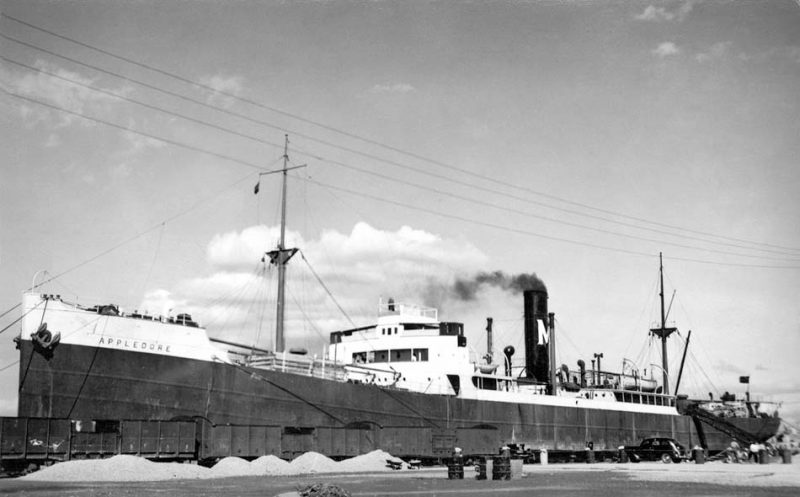
Okeania was the new name given in 1928 to a tramp of 7,990 dwt built by Stephenson on the Tyne in 1907 as Ormiston, which became in 1915 Crown of Castile for the Crown Line of Glasgow and then Candidate in 1920 for T. & J. Harrison of Liverpool.
Craggs of Middlesbrough built the steam tramp Helredale of 6,450 dwt in 1906, which was purchased in 1929 and managed as Kapetan Stratis.
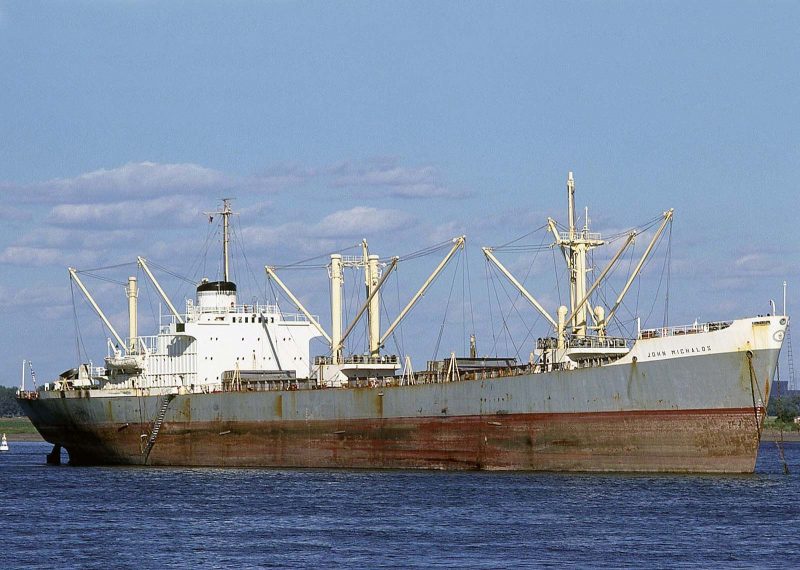
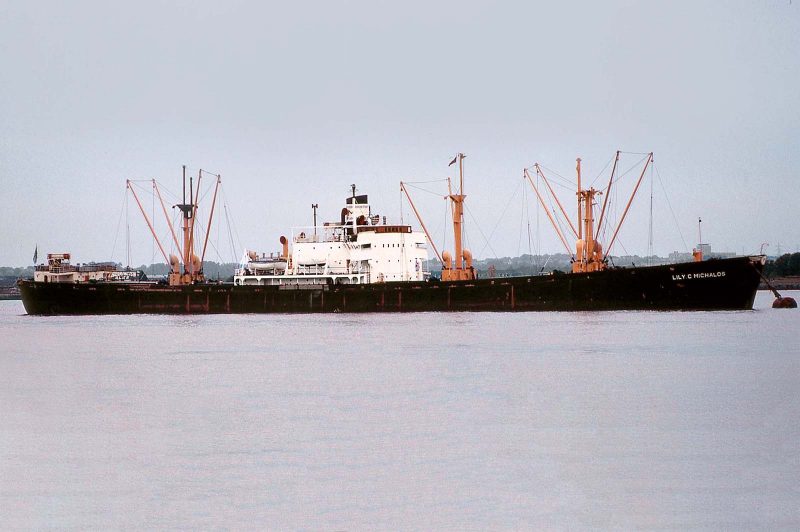
The smaller tramp Agamemnon was purchased in 1932 from Ioannis G. Lyras and had been completed as the standard ship War Vixen of 2,165 grt in 1919 by Canadian Allis-Chalmers for the Shipping Controller. She was wrecked on 4th December 1933 four nautical miles south of Cape Shabla near Constantza while on a voyage from Zea to Kherson in ballast.
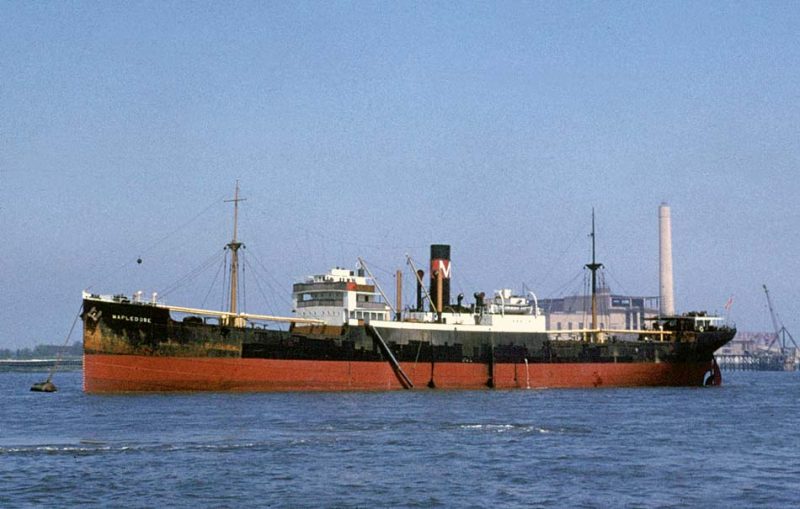
The severe drop in profitable trading during the Great Depression saw the Michalinos family offering three of their four old tramps to the British Scrap and Build Scheme in 1935, but as with all other Greek shipowners, they were turned down, and Antonios Michalos was sent for scrap elsewhere.
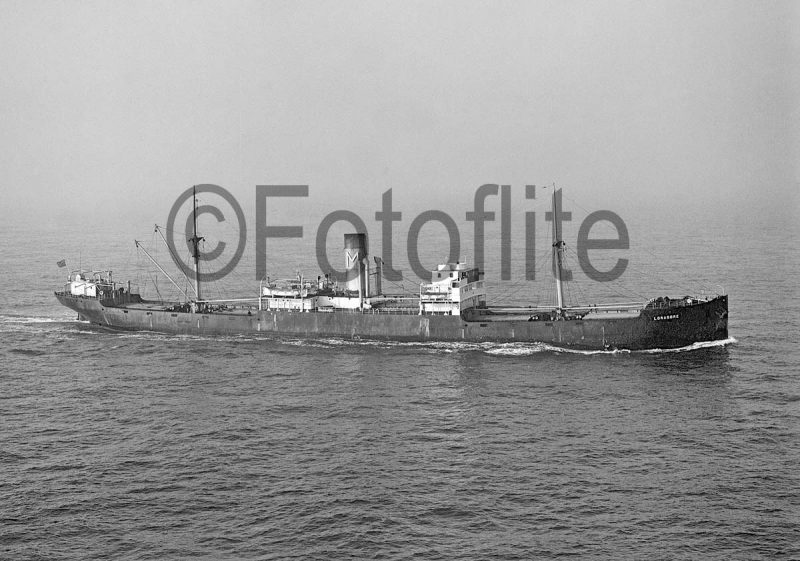
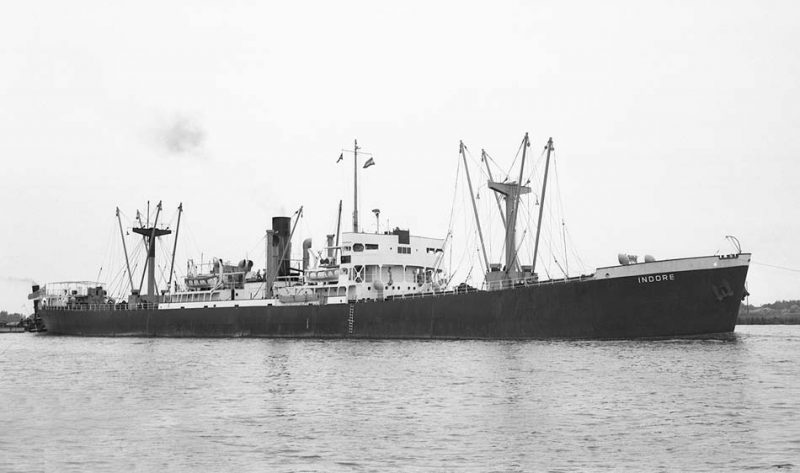
Akropolis of 8,600 dwt was purchased in 1935 and renamed Nicolaos Michalos and had been completed by Doxford in 1913 as Hermion for Norwegian owners.
The Blyth built tramp Angelis Cambitsis of 5,060 dwt was also purchased at this time and renamed Despina, as well as Ocean Prince from Prince Line renamed Germaine, and a Stephenson built tramp from the Tyne became Alexandros of 7,250 dwt and had been completed as King Howel in 1906 for King Line.
The fleet of the Michalinos Maritime and Commercial Co. Ltd. was eight tramps in September 1939 on the outbreak of war, with half managed and chartered for other Greek owners.
Similarly, the tramp fleet of Michalos and Co. Ltd. was ten managed tramps for other Greek owners at this time ranging in size from 3,200 dwt to 8,600 dwt, one of which was managed for the related fleet of Nicolaos Apodiakos (1912-2002) as Victoria of 7,900 dwt and had been completed by the Readhead yard in South Shields as Trewellard for Hain of Cornwall in 1914.
The combined fleet of eighteen owned or managed tramps of the Michalinos and Michalos fleets suffered grievous losses during World War II.
A trio of old worn out tramps remained afloat in 1946 in Despina of 5,060 dwt, completed at Blyth back in 1907, Nicholaos Michalos of 8,600 dwt, completed by Doxford back in 1913, and the even older tramp Iacovos of 3,200 dwt completed in 1901 and managed by the Costas Michalos family for George Angelides of Chios.
An opportunity had presented itself to the Michalinos family in 1942 to have British registered tramps, a British subsidiary being able to take advantage of any further British Government loans.
This was the purchase of the Maritime Shipping and Trading Co. Ltd. with its single tramp Appledore, completed at Haverton Hill on the Tees by the Furness yard for the Tatem tramp fleet of Cardiff. This company had been set up on 9th July 1919 by G. C. Gibson, Lord Glanely’s nephew, on his retirement from war service. He acquired a war-built steam tramp from the British Government for £220,000 and renamed her Cutcombe and managed her himself, with finance also coming from H. G. Cox and A. E. Rice. Cutcombe was sold in 1928 and replaced in the following year by Appledore.
The ‘Dore’ suffix was then adopted by Michalinos and Co. Ltd. for their next tramp purchased in 1943 from Joseph Constantine of Middlesbrough in Maplewood of 1930, renamed as Mapledore in 1945. Mapledore was laid up in January 1960 at Portishead after trading with coal on the St. Lawrence during 1959, and was sold a few months later.
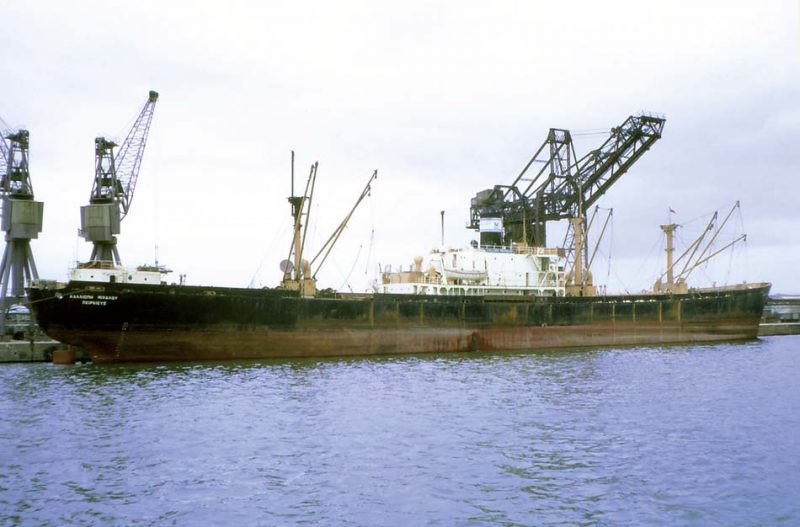
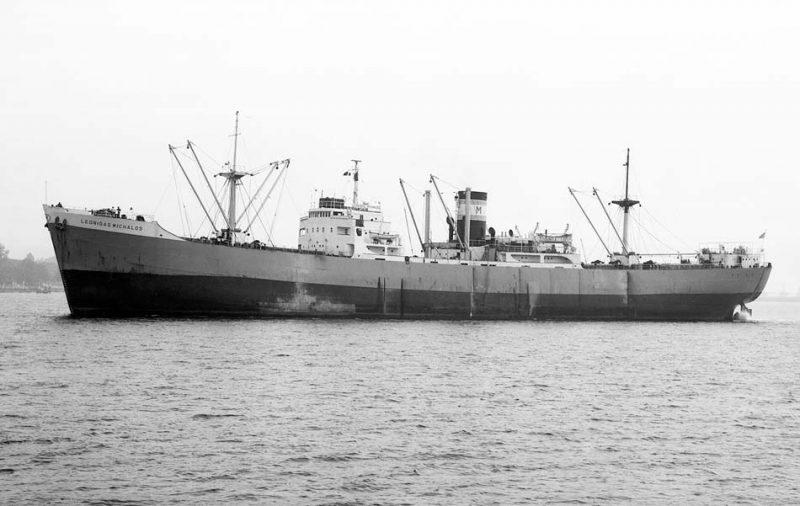
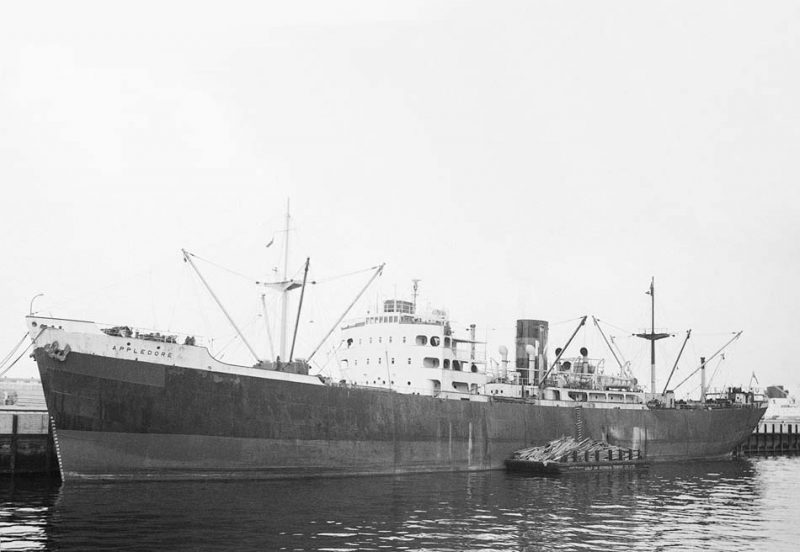
A long line of British registered Michalinos tramps then followed until the last pair of tramps was sold off in 1974, including Loradore purchased in 1944 and renamed two years later, the former Lorca of Strick Line, Indore, a standard 10,000 dwt war built tramp purchased in 1945 from John I. Jacobs, Castledore, a standard ‘Liberty’ type completed in 1944 as Samalness and purchased in 1947 but wrecked on 28th January 1951 on the North Coast of Spain near Cape Ortegal while on a voyage from Hull to Torrevieja in ballast and she sank after breaking in two.
Indore was sold to United Merchants Shipping Co. Ltd. in 1961 and renamed Polegate, with management retained by Michalinos. She arrived at Hamburg on 10th November 1967 to be broken up by Eisen u Metall A.G.
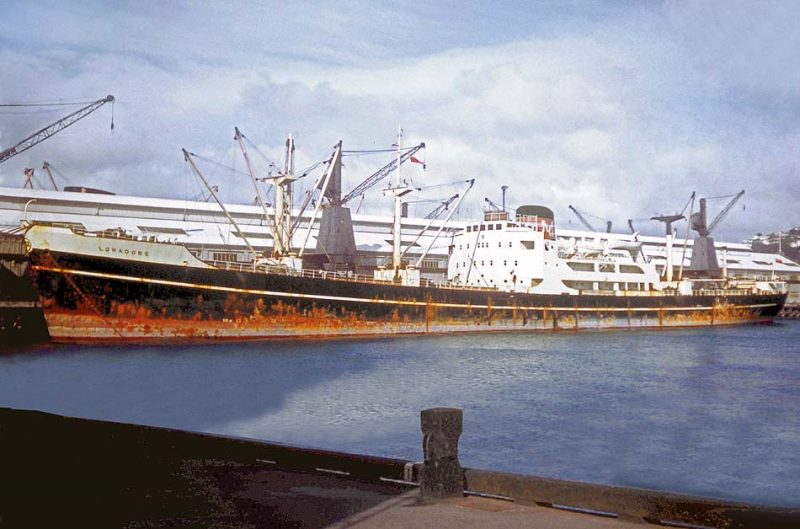
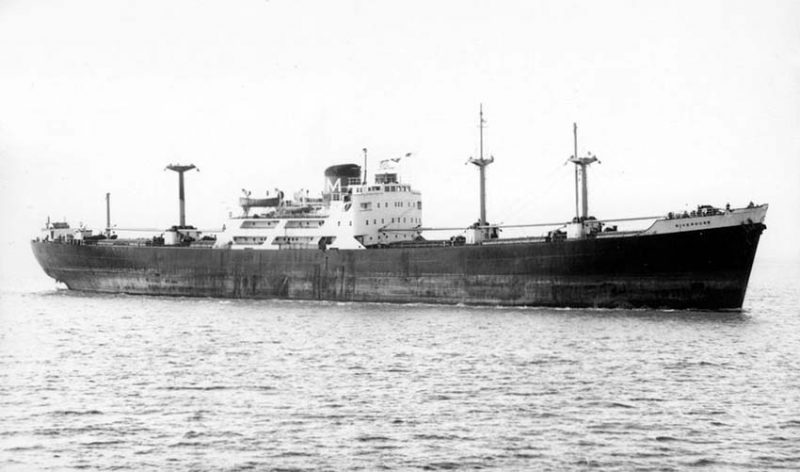
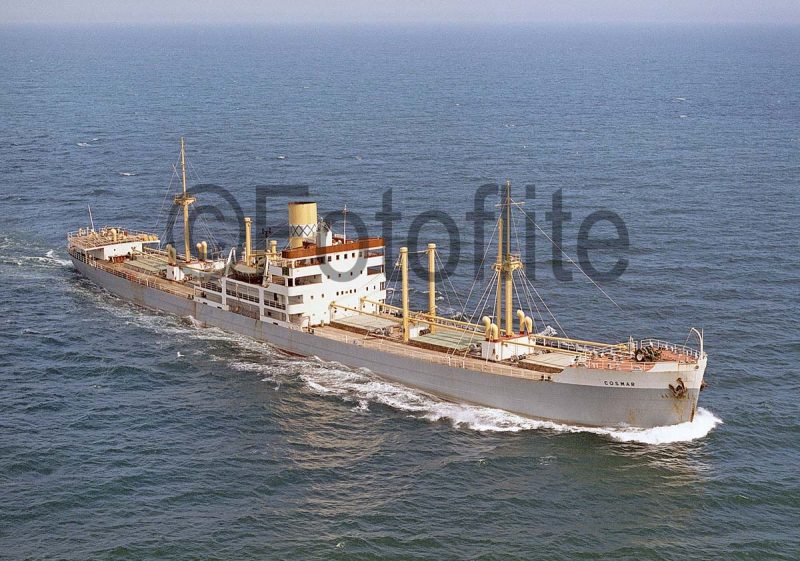

The British registered Michalinos subsidiary of the Maritime Shipping and Trading Co. Ltd. was set up in 1950 with a paid up capital of £90,000 with the principal shareholders being Sir Strati Ralli and his brother, chairman G. A. Tachmindji a Michalos family member and brother of Mrs Lily Michalos, and Harris & Dixon Ltd. of London.
It owned six steam tramps totalling 55,400 dwt and included Stratidore, a Gray built tramp of 7,500 dwt completed in 1949. The following British registered Michalinos tramps were then completed for the new company:-
- Appledore in 1953, a steam tramp of 9,000 dwt from the Gray yard
- Georgidore in 1954, a steam tramp of 11,100 dwt from the Readhead yard in South Shields
- Castledore in 1956, a steam tramp of 11,130 dwt from the Gray yard
- Loradore in 1958, a motortramp of 11,750 dwt from the Gray yard
- Riverdore in 1959, a motortramp of 11,750 dwt from the Gray yard
Castledore (Yard number 1,284) was launched by Mrs Lily Michalos at West Hartlepool and was a shelterdecker with a length of 456.0 feet, moulded beam of 60.0 feet, and loaded draft of 28.0 feet and a service speed of twelve knots from a triple expansion steam boosted by a low pressure exhaust turbine.
She sailed on her maiden voyage in 1956 with coal from Rotterdam to Buenos Aires, returning with grain from the Parana river to Rotterdam, a two year time charter having been fixed for her on this run. She repaired at the South Shields yard of Middle Docks along with the remainder of the Michalinos fleet.
The five hold five hatch Georgidore was launched at South Shields on 19th January 1954 and was on trials three months later to test her triple expansion steam engine boosted by a low pressure turbine manufactured by the Readhead Engine Works. She was one of six tramps built and delivered to Greek owners during the 1950s decade from Readhead. She had two masts each with four derricks, and two further derricks on posts at number three hatch between the navigating bridge and the funnel. A black hull with red boot topping was matched by a black funnel with a red ‘M’ for Michalinos on a central white band.
Georgidore sailed on short and long tramping voyages from the British ports such as the Tyne, Tees, Hull, Manchester and Liverpool to worldwide ports including Quebec, Montreal, Buenos Aires, Colombo, Venice, Durban and Japanese ports. The grandson of the owner Sir Trati Ralli sailed as a cadet on her for a short voyage before transferring to land based work. She was transferred to the Greek flag Michalinos fleet in 1964 and registered under the ownership of Mrs Lily Michalos, and then renamed Domina in their Greek fleet in 1972 before being broken up in Kaohsiung in January 1974.
The British registered Michalinos fleet reached its greatest size of eight tramps in 1959, but only Castledore and Riverdore remained in 1974 to be sold off during that year.
The Greek flag Michalinos fleet had prospered after the end of World War II by trading the economical and ubiquitous ‘Liberty’ type, including Costas Michalos, which loaded a cargo of 195,000 timber poles at Jacksonville on 25th October 1951 to be used as pitprops in Belgium, and another cargo of grain at Vancouver on 9th July 1953, and later unfortunately ran aground at Sangatte near Calais on 26th October 1962. She was refloated and later broken up, and other ‘Liberty’ types traded in post-war years were:-
- Leonidas Michalos purchased in 1947 and broken up in Hamburg in 1966
- Lily C. Michalos purchased in 1961 and broken up at Whampoa in March 1969
- Calliopi Michalos purchased in 1957 and broken up in Valencia in December 1971
- Nicolaos Michalos III purchased in 1953 and broken up at Whampoa in May 1967
Calliopi Michalos had damaged her shell plating by contact with a quay at Lobito in June 1971, where she loaded gypsum rock for Nacala, and the damage was subsequently aggravated by heavy weather. She was escorted leaking into Cape Town and temporarily repaired before sailing with her last cargo to Nacala in Mozambique.
Two other ‘Empire’ Scandinavian types completed the post-war Greek flag Michalinos fleet in Antonios Michalos, purchased from the Burnett Steamship Co. Ltd. of Newcastle in 1961 and broken up at Trieste in May 1969 after badly damaging her stern gear in a grounding at Braila in Roumania.
The other tramp was Gero Michalos purchased in 1965 from the Uskside Steamship Co. Ltd. of Cardiff and subsequently aground at Akyab in Burma during a cyclone and became a total loss.
The Greek flag Michalinos fleet was being managed by N. Michalos and Mrs. Lily Michalos in the 1970s from the traditional Michalos address of 1 Skouze Street in Piraeus, and had the following ships:-
- Apollon of 30,295 dwt completed by the Brodogradiliste yard at Rijeka in 1970, and trading between Antwerp and Providence (Rhode Island) in October 1978
- Cosmar of 10,080 dwt completed by Lithgows as Cape Grenville for Lyle Shipping
- Domina the former Georgidore
- Lily M of 11,280 dwt completed at Saint Nazaire as the engines aft tramp Louis L.D. with five holds and six hatches and powered by a Sulzer diesel of 4,900 bhp by her builders
- Pantelis of 10,405 dwt completed by the Caledon yard at Dundee in 1954 as Temple Hall for Lambert Brothers
- Patagonti of 15,170 dwt and completed by the Doxford yard in 1958 as Harpalyce for J. & C. Harrison Ltd.
- Victor of 12,970 dwt and completed by the Burntisland yard as Sunvictor in 1957 for Saguenay Terminals
- Zinovia of 13,005 dwt built as Pearl Creek for N.G. Livanos by the Gray yard in 1958 and purchased in 1978
In the 1980s and 1990s, Antonis Michalos and Leonidas Z. Michalos were in charge of the fleet, which was managed by their cousin Nikolaos Apodiakos under his Victoria Steamship Co. Ltd. These bulkers included:-
- Apollon of 30,295 dwt
- Akmi of 26,874 dwt
- Apex of 29,222 dwt
- Evmar of 29,212 dwt
In 1998, the fleet of N. Michalos & Sons Commercial Co. Ltd. was six Panamax and Handymax bulkers in:-
- Afros of 75,426 dwt (ex Docevale)
- Akmi of 26,874 dwt
- Alkimos of 43,184 dwt
- Almavita of 45,564 dwt
- Aris of 38,760 dwt
- Cosmar of 44,415 dwt
This fleet of Greek bulkers traded worldwide with iron ore from Vitoria and Tubarao in Brazil and Mormugao in Goa, bauxite to Port Alfred on the Saguenay river, rice from Ko Sichang in Thailand, wood pellets from Klaipeda, and grain from the Mexican port of Lazaro Cadenas on the Pacific coast, and many other bulk cargoes.
The Apodiakos Family
The tramping activities of the Apodiakos family in the later inter-war years were being conducted by Nikolaos A. Apodiakos (1912-2002) from Chios. After the death of his father Achilleas in Marseille in 1918, and of his mother Victoria, nee Michalos, in 1923, Nikolaos A. Apodiakos was brought up by his maternal uncles Leonidas and Zannis N. Michalos.
He graduated from Chios High School in 1931 and was sent to Switzerland to study shipping, business and economics. By 1934, he was working in his uncle’s office at Costas Michalos & Co. Ltd. at St. Mary Axe in London. In 1936, he married Angela Vergottis (1913-1939), daughter of Gerassimos Vergottis, who bore him twin sons in Achilleas and Angeliki Apodiakos.
He was part owner of the former Hain tramp Trewellard from 1937, completed by the Readhead yard at South Shields in July 1914, when she was purchased by himself and Ch. N. Pateras from A.A. Callergis and N.G. Revelis of Piraeus as Sylvia, and the vessel was renamed Victoria, and managed by Costas Michalos. She was bombed, torpedoed and sunk to the west of Ireland by German aircraft on 30th October 1940 in position 54°47′ North, 13°32′ West while carrying a valuable cargo of sugar from Durban to Belfast.
He then emigrated to America with his sons in late 1940 in order to represent the interests of his uncle’s shipping group.
In late 1946, he took delivery of the ‘Liberty’ type Hydra in co-ownership with his uncle Costas N. Michalos, and in 1946 he returned to London, where he set up the Victoria Steamship Co. Ltd., named after his mother, which still operates today.
In 1951, he married Evgenia C. Lemou, with whom he had two children, Costas and Maria Apodiakos.
The company lay dormant until 1953, when Nikolaos began collaborating with his great friend Pavlos A. Palios, a partnership that lasted for the next 45 years. During the years from 1953 to 1979, the Victoria Steamship Co. Ltd. managed from 29 Broad Street in London not only the Apodiakos and Palios fleets, but also those of the Greek Chalkousis, Tsakalotos, Philippotis and Margaronis families.
The company began by managing from 1953 four ‘Empire’ and ‘Liberty’ standard types and one pre-war surviving tramp, and twenty years later eighteen tramps were owned or managed named:-
- African Glory of 9,100 dwt (ex Yarrawonga)
- African Lion of 11,338 dwt (ex King Henry)
- Almar of 9,950 dwt (ex Harpalion)
- Amarilis of 12,690 dwt (ex Mariel)
- Anabelle of 2,900 dwt (ex Nabeul)
- Apollon of 30,275 dwt
- Cosmar of 10,060 dwt (ex Cape Grenville)
- Chrysanthi of 10,168 dwt (ex Carrigan Head)
- Medita of 15,070 dwt (ex Stephanos P)
- Minoa of 3,490 dwt (ex El Mina)
- Myrtidiotissa of 13,336 dwt (ex Joannis)
- Pantelis of 10,405 dwt (ex Temple Hall)
- Patagonti of 15,170 dwt (ex Harpalyce)
- Paulcrown of 9,325 dwt (ex Heian Maru)
- Tetien of 17,380 dwt (ex Robert Kobelac), Theagenis of 8,900 dwt (ex Mangarella)
- Victor of 12,970 dwt (ex Sunvictor)
- Zini of 9,300 dwt (ex African Trader)
S. G. Mellstrom FICS became Chartering Director in 1960, and the Piraeus agents remained as the Michalinos Maritime and Commercial Company Ltd.
During the late 1970s, the Victoria Steamship Co. Ltd. represented over ten London Greek shipowners with thirty ships to their portfolio.
Four bulkers were then completed by the Hakodate and Namura yards in Japan on behalf of clients, together with the bulker Astromar of 45,240 dwt in 1985.
In 1996, the Apodiakos family set up Blue Planet Shipping Ltd. from the traditional Michalos address of 1 Skouze Street in Piraeus to manage the family fleet of eight Panamax and Handymax bulkers in Afros, Akmi, Alkimos, Almavita Aris, Astromar, Cosmar and Evmar.
The Victoria Steamship Co. Ltd. in London managed other bulkers for London Greek clients, these were:-
- Agiodektini of 18,611 dwt
- Akti of 28,928 dwt (ex Graigwen)
- Alexandria of 29,372 dwt
- Almar of 37,200 dwt
The fleet traded worldwide to West Africa to load logs and forestry products, to Mauritius to load sugar, to Port Hedland (Western Australia) or Vitoria (Brazil) to load iron ore for Japan or China, to the Mississippi upstream from New Orleans to load grain, to Geelong to load grain, to Dar-es-Salaam to load agricultural crops, to Bahia Blanca or Rosario to load grain, to Manzanillo in Mexico to load grain, and Dominica in the Caribbean to load island produce.
By 2009, the Victoria Steamship Company Ltd. was directed by Costas N. Apodiakos from Bell Court House in London and controlled a big fleet of nine bulkers of almost half a million deadweight tonnes.
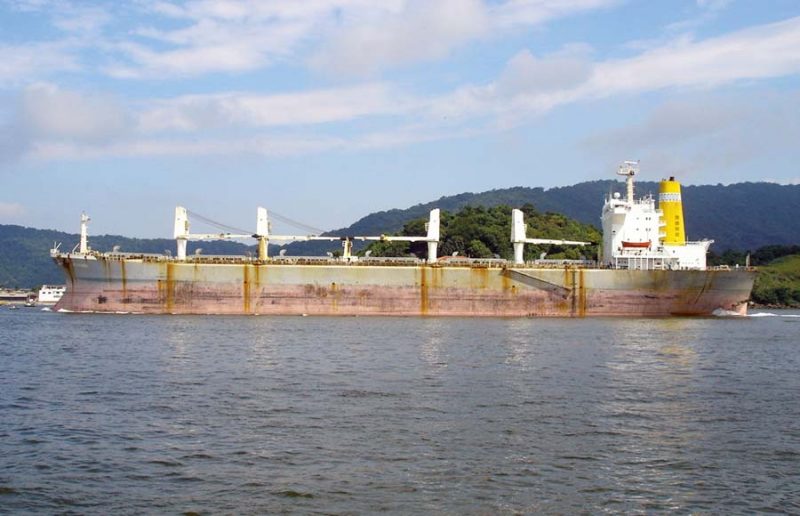
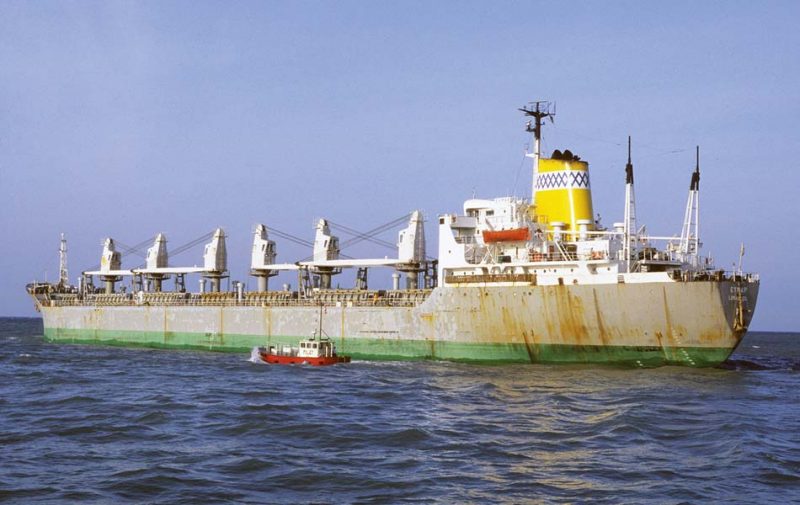
These included six double hulled bulkers of 53,800 dwt in Apollon, Apex, Akmi, Avra, Evnia and Nicolaos A, all built in China.
On instructions from Blue Planet Shipping Ltd., the Victoria Steamship Co. Ltd. in London placed an order in 2010 for a gearless bulker of 95,000 dwt, which was completed as Alkimos in 2013 from a Chinese yard.
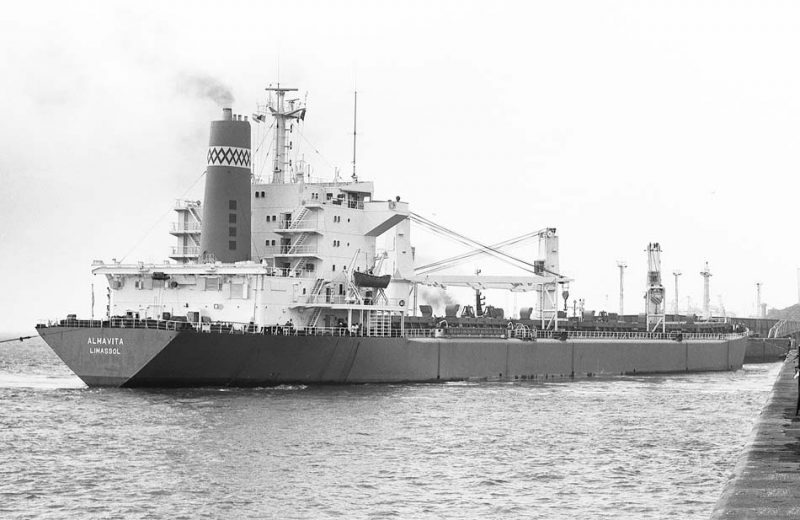
The company subsequently, under instructions from Blue Planet Shipping Ltd., placed orders for three geared bulkers of 64,000 dwt from the Jiangsu Group yards in China, and completed as Apex and Afros with one as yet unnamed, and four Kamsarmax bulkers of 82,000 dwt from Chinese yards, and completed as Cosmar and Evmar with two as yet unnamed.
In addition to these vessels, Blue Planet Shipping Ltd., the Victoria Steamship Co. Ltd. continues to manage other bulkers from London for Greek and London Greek clients:-
- Alexandria of 82,852 dwt
- Annita of 53,688 dwt
- Corinna of 81,681 dwt
- Lorentzos of 53,688 dwt
- Portaitissa of 87,144 dwt
- Sasebo Glory of 85,020 dwt
The funnel colours of the fleet of Blue Planet Shipping are yellow with a row of blue edged white diamonds on a white central band, while many of the bulkers managed by the Victoria Steamship Co. Ltd. also have yellow funnels with a central white band but bearing a blue edged Greek ‘key’ pattern. Light grey hulls grace the fleet as well as the new bulker Afros of 63,403 dwt, which was completed in January 2018 at a Chinese yard and is equipped with a set of tall, white painted Flettner rotor sails placed on the starboard side of the vessel, and which gave an extra 1.7 knots above her designed speed on her maiden voyage to Newcastle (NSW).
The fleets of Blue Planet Shipping and the Victoria Steamship Co. Ltd. were engaged on the following voyages in March 2018:-
- Avra – Anchored at Port Qasim, Pakistan
- Cosmar – Anchored at Santos, Brazil
- Evmar – Loading cargo at Vancouver
- Apex – Loading cargo at Nantong, China
- Alma – Sailing from Warrenton, West U.S.A. to Changjiang, China
- Axios – Loading at Bunbury, West Australia
- Afros – Sailing from Kaohsiung, Taiwan to Botolan, Philippines
- Alkimos – Sailing from Krishnapatnam, India to load coal at Richard’s Bay, South Africa
- Arion – Sailing from Busan, Korea and Gwangyang, Korea to Pohang, Korea
- Evnia – Arrived Chittagong, Bangladesh from Dafeng, China
- Nicolaos A – Sailing from Zhoushan, China to Guangzhou, China
- Portaitissa – Sailing from New Orleans and Plaquemines, Louisiana to Gothenburg
- Sasebo Glory – Anchored off Necochea, Argentina
- Corinna – Sailing from Escombreras, Spain to Chesapeake Bay, U.S.A.
- Annita – Sailing from Lanshan, China and Basuo, China to Groote Eylandt, Australia
- Lorentzos – Sailing from Singapore to Chittagong
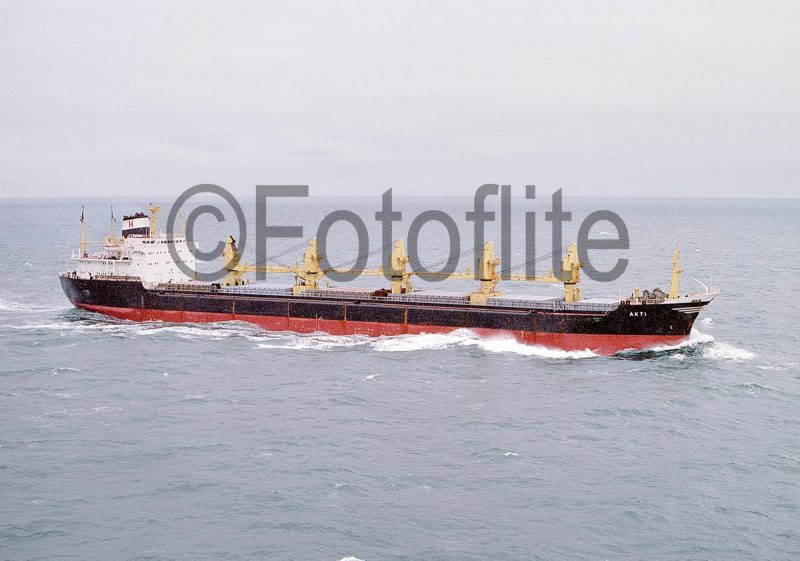
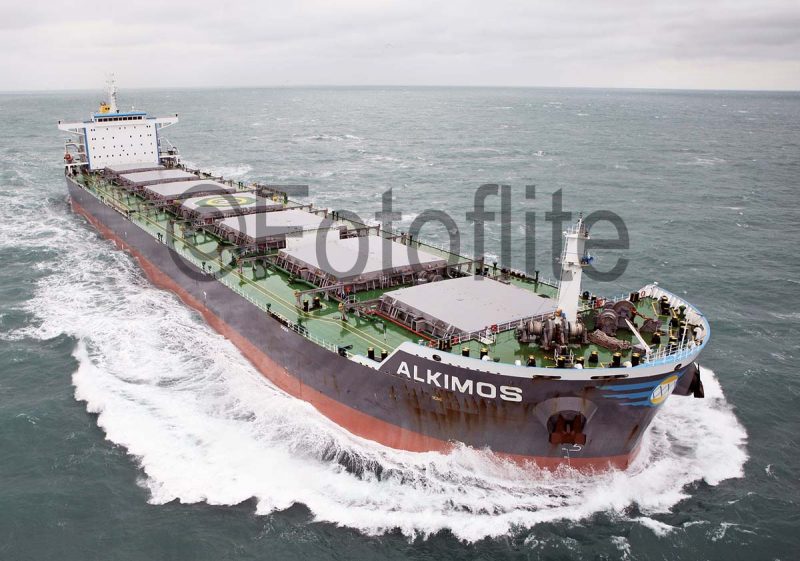
Postscript
The world of Greek tramping and the hundreds of Greek shipowning families operating from Piraeus, London and New York offices is a rewarding and interesting subject in itself, but one that needs a deep insight into its history.
One person with this necessary deep history of Greek shipping is Dr. Gelina Harlaftis, a charming and very knowledgeable woman, and Lecturer in Maritime Economic History at the University of Piraeus, who has written two books on the subject, both of which I have. We met in 1991 on the old cableship Thalis O. Milissios at Glyfada near Athens, while she was supervising an exhibition of photographs in the cable hold of the vessel, as the cableship is now permanently moored as a museum ship.
The cableship was built back in 1909 as the Joseph Henry of 843 grt by the Newport News Shipbuilding and Dry Dock Company for the U.S. Army. The ship has a wooden bridge and a forward fixed cable drum on her fo’c’stle, and was transferred to the Greek Government in 1947 and laid over one hundred submarine cables in Greek waters before becoming a museum ship in 1991 at Glyfada.
I wish to sincerely thank Gelina for her deep knowledge of the history of Greek shipping and her two reference books on a subject which to Greek shipowners is a ‘closed’ and secret domain of their own.
The only survey of the crews of Greek tramps was done in 1959 by C. Antonopoulos, Vice President of the Seamen’s Union VAT, and gave figures of 44% of officers from the Greek islands and 30% of officers from Piraeus and Athens, while for able seamen and other ranks the figures were 54% from the Greek islands and 14% from Piraeus and Athens. The survey was published in the January 1961 issue of Naftika Chronika. Today, the picture is very different, and Greek ships are crewed by Greek, Filipino, Ukrainian, Burmese, Moroccan and many other nationalities of seafarers.
The three related families of Michalinos, Michalos and Apodiakos have been well documented by myself in my series of books on tramping, and by other authors, thus I can write with some authority on them.
Greek tramping fleets have remained as family firms with at their heart a local, national and international system of networks e.g. the Greek Shipowners Union (GSU).

The dozens of Greek tramp shipowners that have never really been documented before would be almost impossible to document, as the families rely on single ship companies for every owned or managed vessel to hide their beneficial identities. This secrecy is understandable, but it is a barrier which cannot be penetrated to documenting their fine fleets.
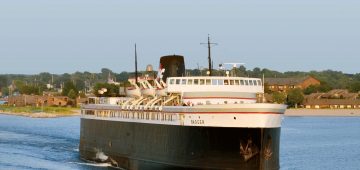
Comments
Sorry, comments are closed for this item